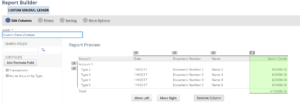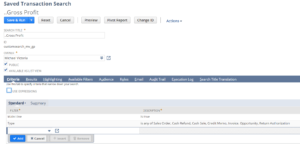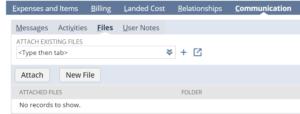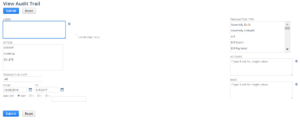“Greg Cole, the Auditor is here!” said the CFO as I would walk through the silence of my newest client’s audit department. As I am sure you are aware, during my time as a financial statement auditor I was not always my client’s favorite person to see first thing in the morning. It’s understandable. Who wants to spend time digging through their system, filing cabinets, and desk drawers while also trying to get work done for the current year at the same time? Nobody.
Below you will find 5 reasons why you may find yourself jumping for joy next time your auditors arrive (or at least not running for the hills!) and your company is using NetSuite.
1. GL Audit Numbering

In NetSuite, the “GL Audit Numbering” feature applies a gapless numbering sequence to all general ledger posting transactions. It even applies numbering to voided transactions. Not only does this feature help your company meet certain international audit requirements, it can prove extremely useful for your auditors to determine if their sample selection is complete. For example, a key requirement for auditors while performing Journal Entry testing is to document how they determined the Journal Entry listing they have received is complete.
2. Easy Configuration of Ad Hoc Reports and Saved Searches
When I was an auditor it was not unusual to be told by my client that a report I requested was either not possible or would require a substantial amount of time for the IT department to create.
Any report in NetSuite can be configured by anyone (with the permission) to add desired columns that the auditor requests using drag and drop functionality. For example, you can add the transaction number, memo, or even a custom field used by your company to each line on the GL detail.

Perhaps the auditor asks you for a report that your company does not use for external or internal reporting purposes. Here we go again, the auditors have created a new procedure to keep the audit “fresh” and to keep you on your toes. For example, the auditor wants a listing of all vendors that were added to your company’s “retail” category during the current year, with a credit limit greater than $15,000 but less than $100,000, and a sales rep of John Smith or Jane Doe. A saved search could easily generate this report using standard NetSuite functionality. No more exporting reports to excel just to create a pivot table. Save the headache with NetSuite Saved Searches!

3. Drill Down Capabilities on Financial Reports and Saved Searches
What is it about auditors and their uncanny ability to choose that one random transaction on the GL detail that you provided? You look at the detail, determine the transaction, and then perform a series of other steps in your current system to pull up the related record. 10 minutes of you and your auditor’s day that you both will never get back. Save this 10 minutes in NetSuite by clicking directly on the balance the auditor is inquiring about and NetSuite will take you directly to the Journal Entry, Invoice, Vendor Bill or other transaction that is making up the balance on the GL detail.

4. Attached Files to Transactions
Think back to number 3. You and the auditor spent the time to find which invoice made up the balance. Now, off to the filing cabinets to pull the invoice! Not so fast. In NetSuite you can easily attach original copies of transaction support directly to the transaction record. NetSuite even offers a drag and drop feature so you don’t have to navigate back to where you just saved the scanned invoice.

5. Audit Trails
The Transaction Audit Trail allows you to produce a report for all transactions in NetSuite. This report provides information about what the transaction is, who entered the transaction, and when the transaction was created or modified.

One step lower than this is the System Notes subtab on the transaction record. This is a more detailed report that shows down to the field level of who created or modified the field, what the field was changed to and from, and finally, when the field was created or modified. Another great advantage of system notes is that they are available to be queried in the saved searches mentioned in 2 and 3 above!

RSM is the #1 solution provider of ERP and CRM systems for the middle-market. RSM helps companies evaluate, select and implement the best ERP solutions available and was recently recognized as the 2016 worldwide solution provider of the year by NetSuite. To contact RSM with questions related to this post or any others related to NetSuite, please reach out via email at erp@rsmus.com or by phone at 855.437.7202.
By: Greg Cole – Pennsylvania NetSuite Solution Provider

 RSMUS.com
RSMUS.com